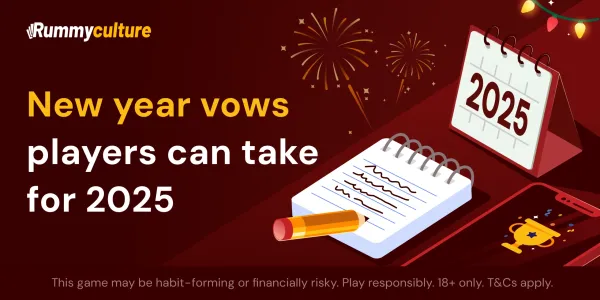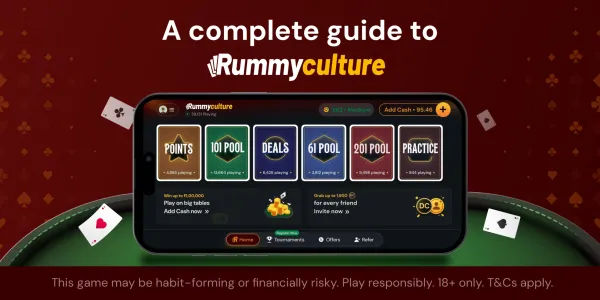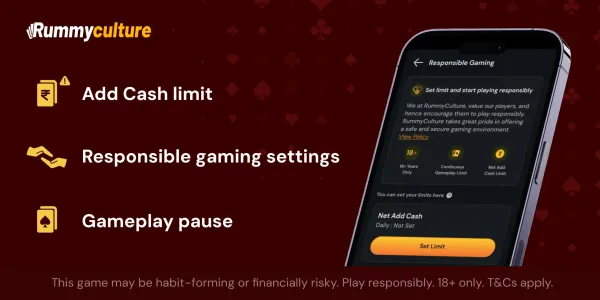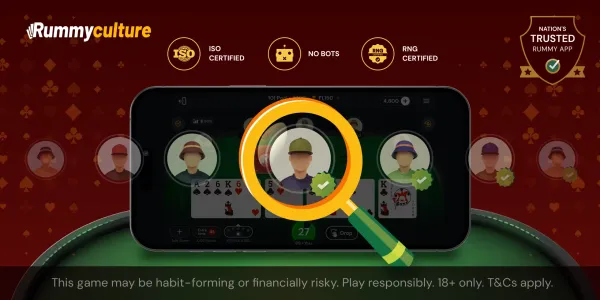- Home
- What's the Buzz
- 21 card rummy vs 13 card rummy: key differences and rules
21 card rummy vs 13 card rummy: key differences and rules
Not sure which rummy variant to play? This blog explores the key differences and rules of 21 Card Rummy vs 13 Card Rummy, helping you pick the perfect game for your skill level.
RummyCulture Elite Editors | 15th Jan, 2025
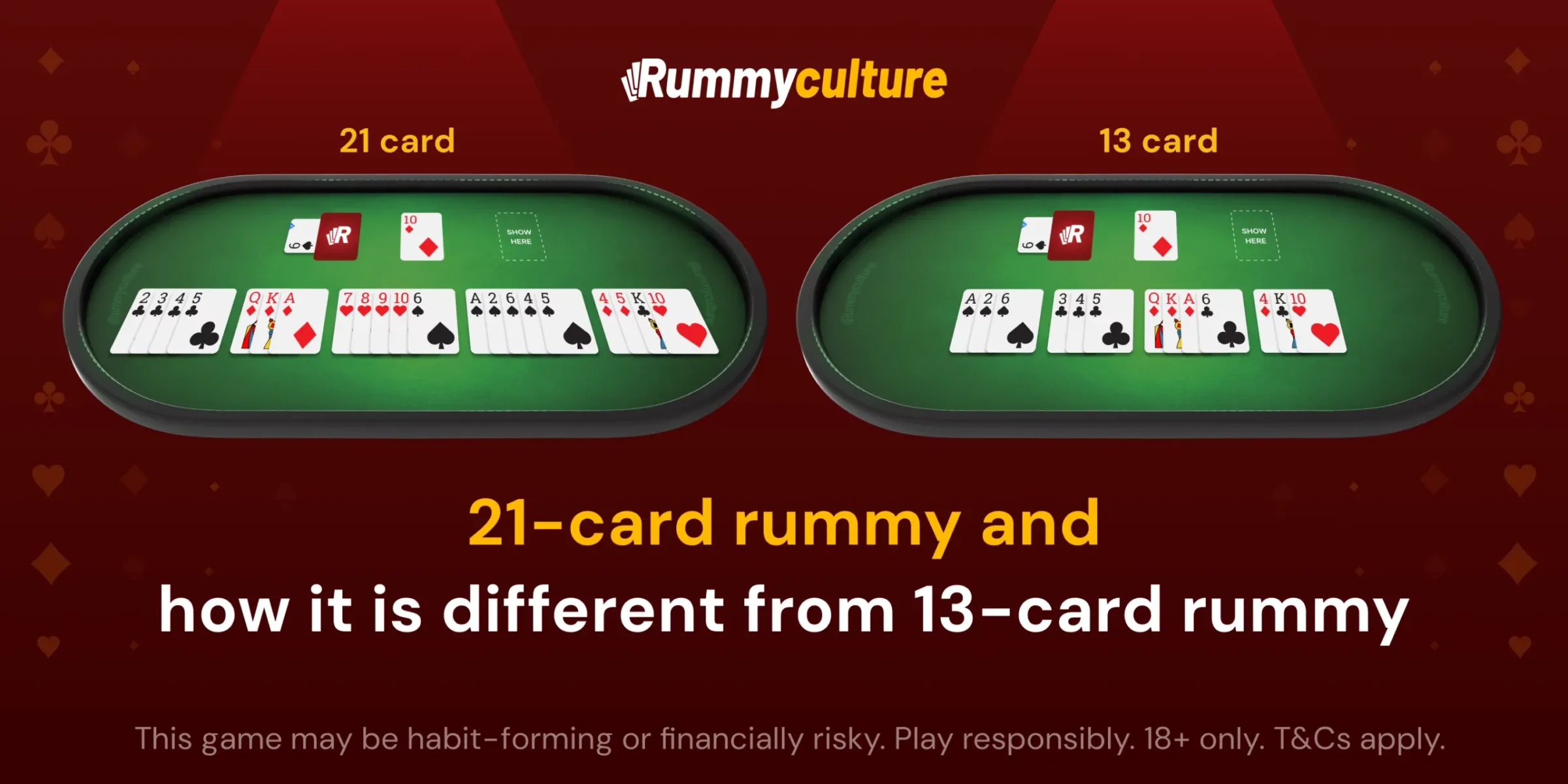
21 Card Rummy vs 13 Card Rummy gameplay
Rummy is a popular card game in India that has been played across the country for many years. There are numerous variants of the game and the most played one in India is 13-card rummy. However, another interesting form of rummy is 21-card rummy. These two require a slightly similar set of skills but are quite different from each other when it comes to the rummy rules. In this blog, let’s understand the rules of 21-card rummy and how it is different from the 13-card version of the game.
Rules of 21-card rummy
In 21-card rummy, each player is dealt 21 cards. You need any one of the following combinations to make a valid declaration:
- At least 3 pure sequences. A pure sequence is a group of at least 3 consecutive cards of the same suit. For example, 5♥️6♥️7♥️is a pure sequence. Apart from the pure sequences, the rest of the cards can be arranged into sets or sequences.
- Have 8 jokers in one group. You don’t need to arrange them in any particular order. But, you need to arrange the rest of the cards.
- Have 8 dublees. A dublee is a combination of two cards of the same suit and rank. For example, 9♣️ 9 ♣️is a dublee. Once you have 8 dublees, you do not need to arrange the rest of the cards.
- Have 3 tunnelas. A tunnela is a group of three cards of the same suit and rank. For example, 8♦️8♦️8♦️is tunnela. If you have 3 tunnelas, you do not need to arrange the rest of the cards.
Keep in mind that unlike 13-card rummy, a 21-card rummy game uses three full decks of cards instead of the usual two.
The role of jokers is very important in this variation of rummy. There are three types of jokers:
Printed Jokers
- As the name suggests, these cards have the word “Joker” printed on them. They can be used to form sets or sequences, but their use depends on the game rules. Typically, a printed joker can replace any missing card in a set or sequence.
Cut Jokers
- A random card is chosen at the start of the game as the cut joker. All cards of the same rank, regardless of suit, are treated as jokers for that round.
- For example, if the 7 of clubs is the cut joker, all 7s (of hearts, diamonds, spades, and clubs) act as jokers.
Upper/Lower Jokers
- These are cards directly adjacent to the cut joker in rank, treated as additional jokers.
- For example, if the cut joker is 7 of clubs, the 6 (lower joker) and 8 (upper joker) of all suits also act as jokers.
A game of 21-card rummy can have up to 14 jokers.
Compared to 21-card rummy, the rules of 13-card rummy are simpler. Here’s a quick read of the basics:
- 13 cards are dealt to each player at the start of the game.
- The aim is to make a valid declaration, for which you need to have at least 2 sequences and one of them has to be a pure sequence. The rest of the cards can be arranged into sets or sequences.
- There are no tunnelas or dublees in 13-card rummy. There’s only pure sequence, impure sequence, and sets. This is what makes this variation less complex than 13-card rummy.
To summarise, here’s a table that will help you understand the differences even better:
| Feature | 21-card rummy | 13-card rummy |
|---|---|---|
| Number of cards each player gets | 21 | 13 |
| Number of decks used | 3 | 2 in most games but some variations might use only 1 |
| A valid declaration contains | At least 3 pure sequences | 2 sequences, at least 1 needs to be pure sequence |
| Grouping of cards | Sequences, sets, tunnelas, dublees, and jokers | Sequences and sets only |
| Complexity | More combinations add more complexity to it | Simpler and faster |
Marriage sets and deck structure in 21-card rummy
There is a special type of set in 21-card rummy known as the “marriage set”. Simply put it comprises a King, Queen, and Jack of the same suit. This combination yields additional points in a game. The complexity of a 21-card rummy game increases because it has two additional jokers – upper and lower.
The larger deck and increased card count adds more excitement to the game. This expanded structure increases gameplay depth, emphasizing planning, patience, and adaptability compared to simpler rummy variants. The dynamic use of jokers and unique combinations like “marriage” make 21-card rummy a skill-intensive and engaging variation of the classic card game.
Useful strategy for 21-card and 13 card rummy
21-card Rummy
- Prioritise forming sequences first. This helps you reduce your dependency on jokers.
- Use jokers wisely. Avoid using them as the middle cards and use them in open-ended combinations more.
- Keep a close eye on the moves of your opponent. Observe and understand what combinations they are trying to make and try not to discard a card that they need.
13 Card Rummy
- You must form a pure sequence first. Having a pure sequence is a must for a valid declaration in 13-card rummy.
- Discard high-value cards as soon as possible. If you are not able to create a sequence or set with them in the first 1-2 moves, it’s better to discard them to reduce your points.
- Drop if you are not confident about your cards. Some pros usually drop from a game if they don’t have at least a pure sequence and a joker at the start of a game.
Skills required for 21-card rummy
In 21-card rummy, focus on pure sequences, managing discards to minimize points, and observing opponents’ picks and discards for clues. It is advisable to form sequences first and reduce your dependency on jokers. If you are an aggressive player, do not get blind-sided by it, make sure you do not discard cards that are useful for your opponents.
| Must-visit links for rummy enthusiasts | ||
| Online Rummy | Free Rummy | Indian Rummy |
| Real Cash Rummy | 13 Card Rummy | Rummy App |
| Rules of Rummy | Rummy Variations | Rummy Tournaments |
| Pool Rummy | Points Rummy | Deals Rummy |
Skill set difference between 21-card and 13-card rummy
Playing both 21- and 13-card rummy enhances adaptability. The 21-card variant hones patience and strategic planning due to its complexity, while the 13-card version sharpens quick thinking and decision-making under time pressure.
Keep probability in mind
Probability plays a crucial role in rummy, influencing decisions like what does your opponent need, discarding cards, and optimizing the use of jokers. Regular practice improves intuitive grasp of probabilities, enhancing gameplay over time. Players should consistently refine these skills to master both variants and become a truly versatile rummy player.
Featured articles


